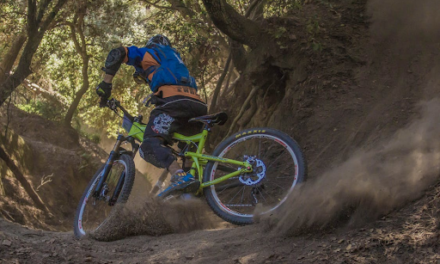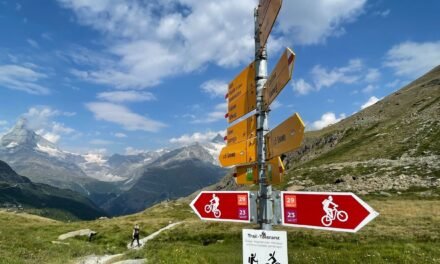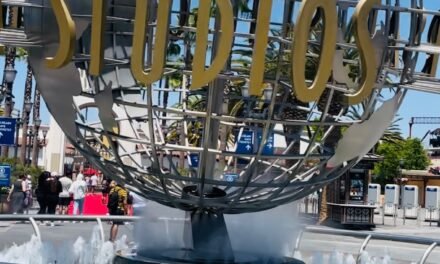
Experience the wonder and beauty of Antelope Canyon
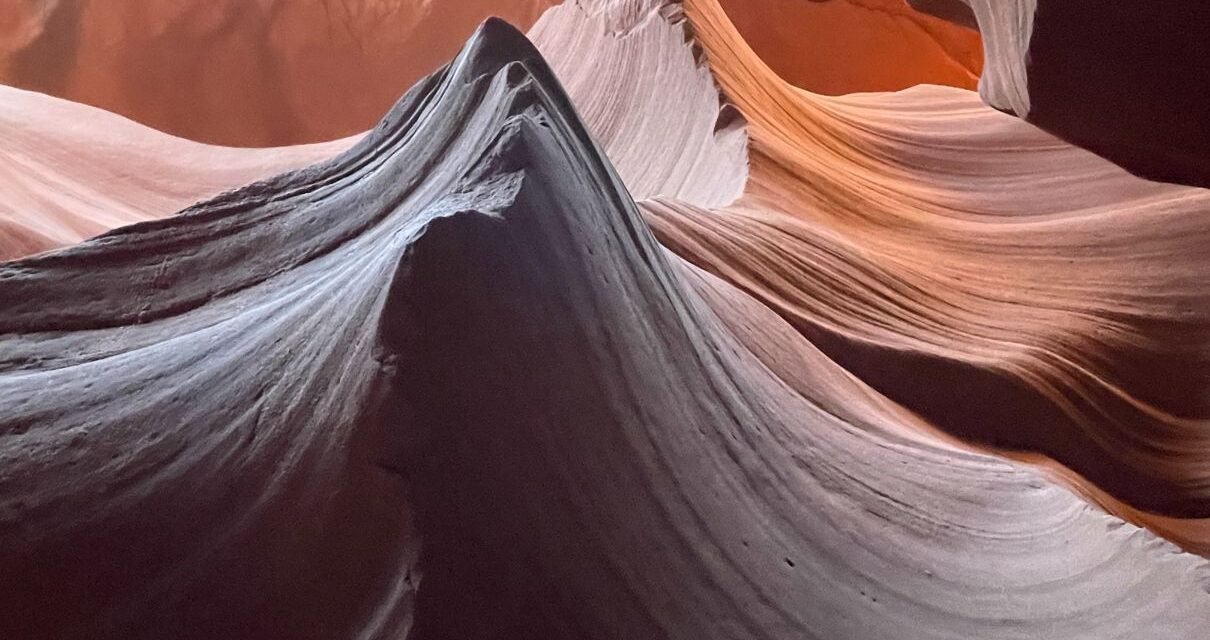
Antelope Canyon is the most-visited and most-photographed slot canyon in the Southwest. This natural masterpiece, which got its name from local Navajo stories regarding the herds of pronghorns that used to wander in the area, is located near Page, Arizona. It’s a sacred monument of the Navajo people and a Navajo Tribal Park, which means you can only see it with an authorized Navajo tour guide.
The canyon had been on my bucket list for a while and I finally got the opportunity to visit it during a road trip through northern AZ. Though the countless photos and Instagram pics of this gem, as well as the Windows 7 screensaver that rocketed it into the fame stratosphere, are alluring, I can attest they don’t have the same mesmerizing effect as seeing it in person.

Lower Canyon
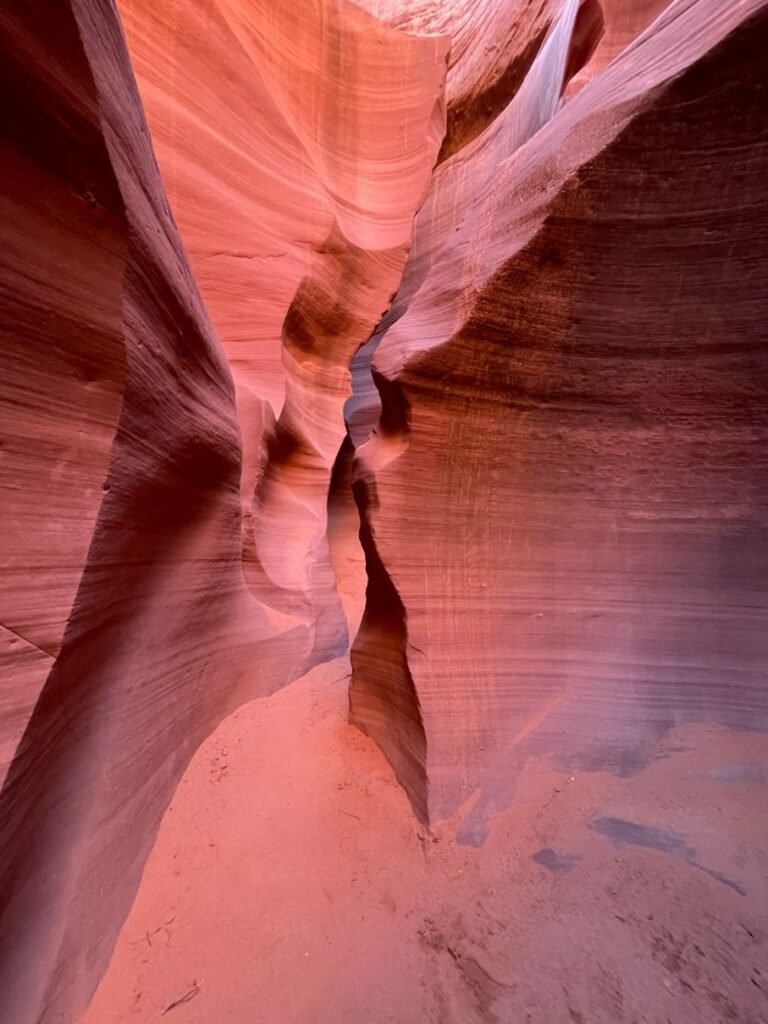

Known by the Navajo as “The place where water runs through the rocks,” Antelope Canyon comprises two separate canyons – Upper and Lower – and you can tour one or the other or both, as I did. Upper Antelope is known as “The Crack” because it’s shaped like an A, narrow at the top and wider at the bottom. This design is what creates the striking light beams that occur when the sun is being projected onto the canyon floor, an occurrence that is best viewed in the summer months during midday. It’s these iconic light beams that have made Upper Antelope legendary worldwide.
Lower Antelope, known as “The Corkscrew,” is the opposite. It has a V shape, wide at the top and narrow at the bottom. Though it doesn’t have the eerie light beam effect, in my opinion, it’s equally as breathtaking as its sibling.
This stunning, colorful sandstone formation was created by layers of rain, wind and erosion, a process that took millions of years. Its walls stand up to 120 feet above the streambed, while the canyon itself is situated about 3,700 feet above sea level. It gets its varying shades of vivid orange and red hues from the iron oxide deposits that were mixed in with the windblown sands.
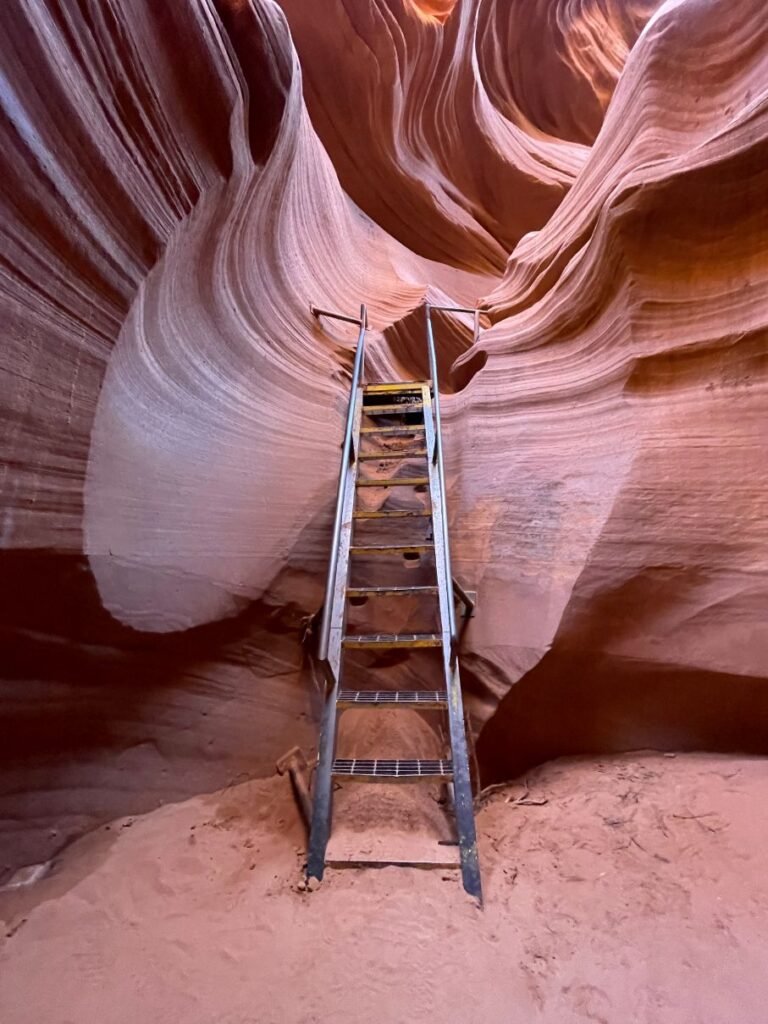
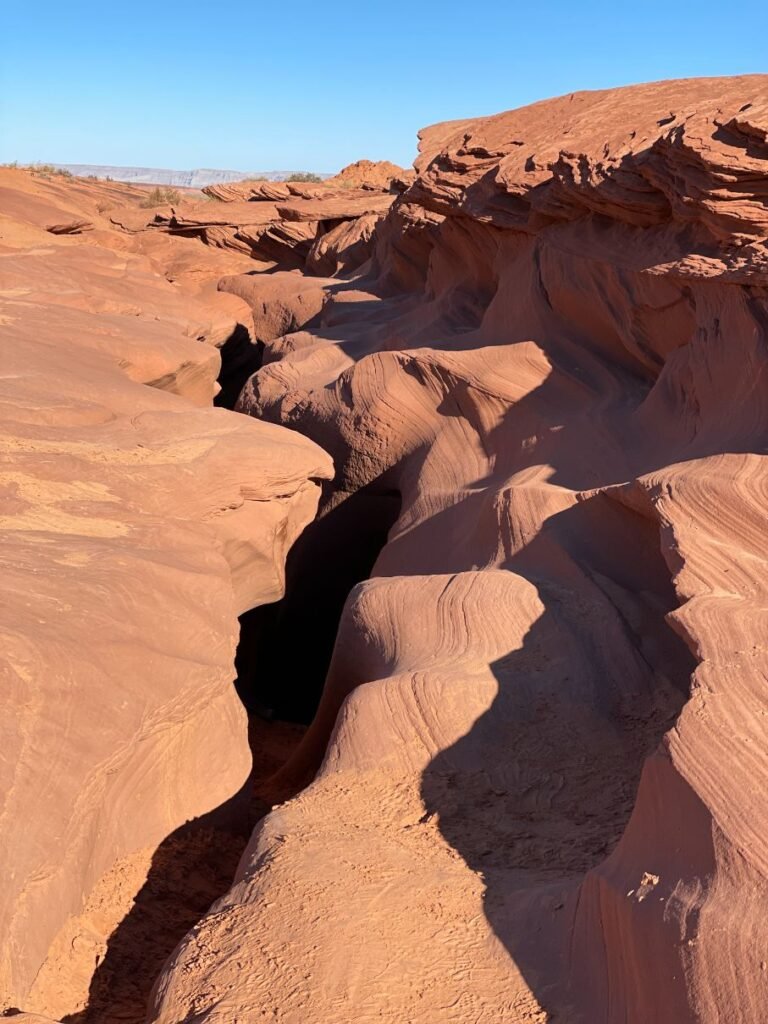
Outside of Lower Canyon
Sue Tsosie discovered the canyon while herding sheep as a young Diné girl back in 1931. I can only imagine her surprise and amazement upon stumbling across it, and how she proceeded to describe it to her family. Words simply don’t do it justice. Fittingly, today, Sue’s daughter Caroline operates tours of the canyon.
The majority of people visit Upper Canyon if they only have time to see one of the canyons, due to its massive popularity. You’ll start your tour at the tour company’s office, where you’ll board a vehicle for the ride to the entrance of the canyon. Then your driver/guide escorts you through the canyon for a quarter of a mile walk, as he explains about its geology and gives tips on taking the best photos. The canyon bottom is wide and sandy and easy to navigate. You’ll spend less than an hour in the canyon and at the end, you’ll exit and walk down a series of stairs and ramps to return to the vehicle.
A few things to note about Upper Canyon: Since it’s more popular, it’s more expensive than the Lower, and more crowded as you can expect. Tours can get backed up and you might feel like you’re being herded around with not much time to fully enjoy the sights. Another point to consider is that if you’re not visiting during peak times, you probably won’t get to see the light beams.
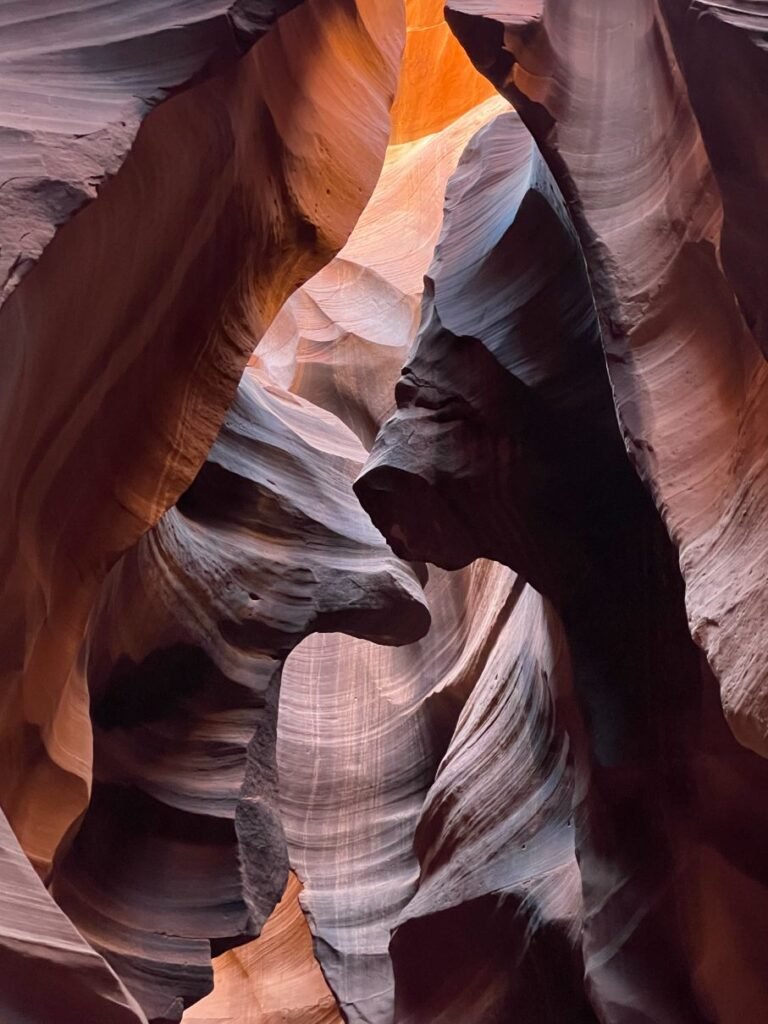
Upper Canyon
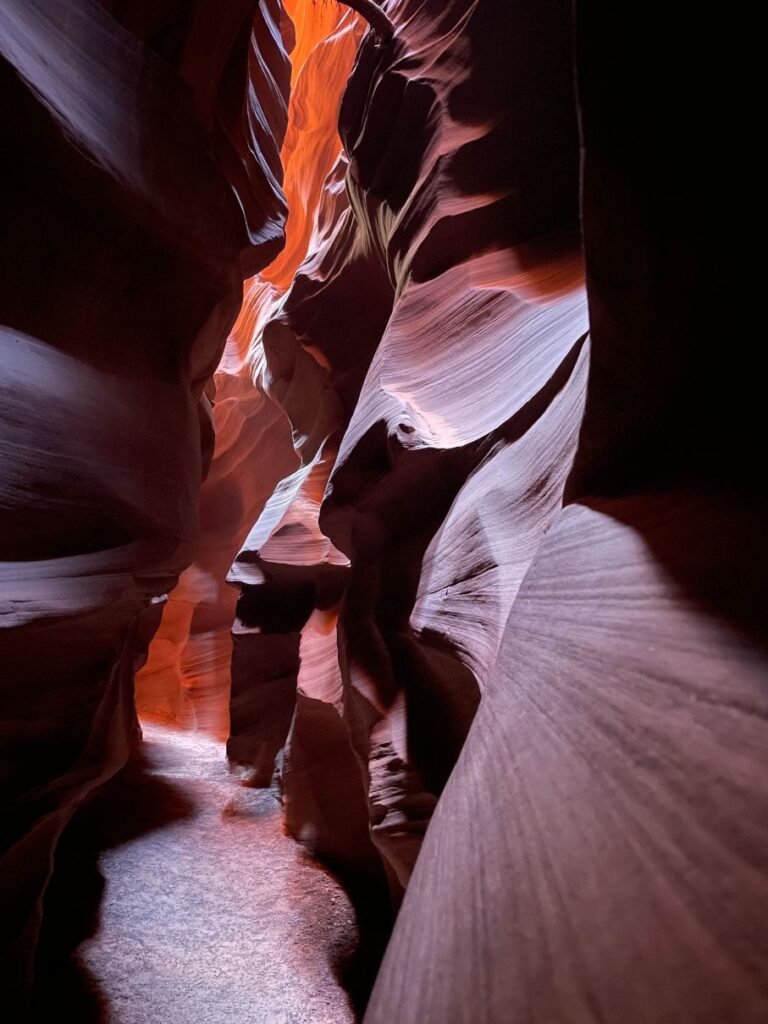
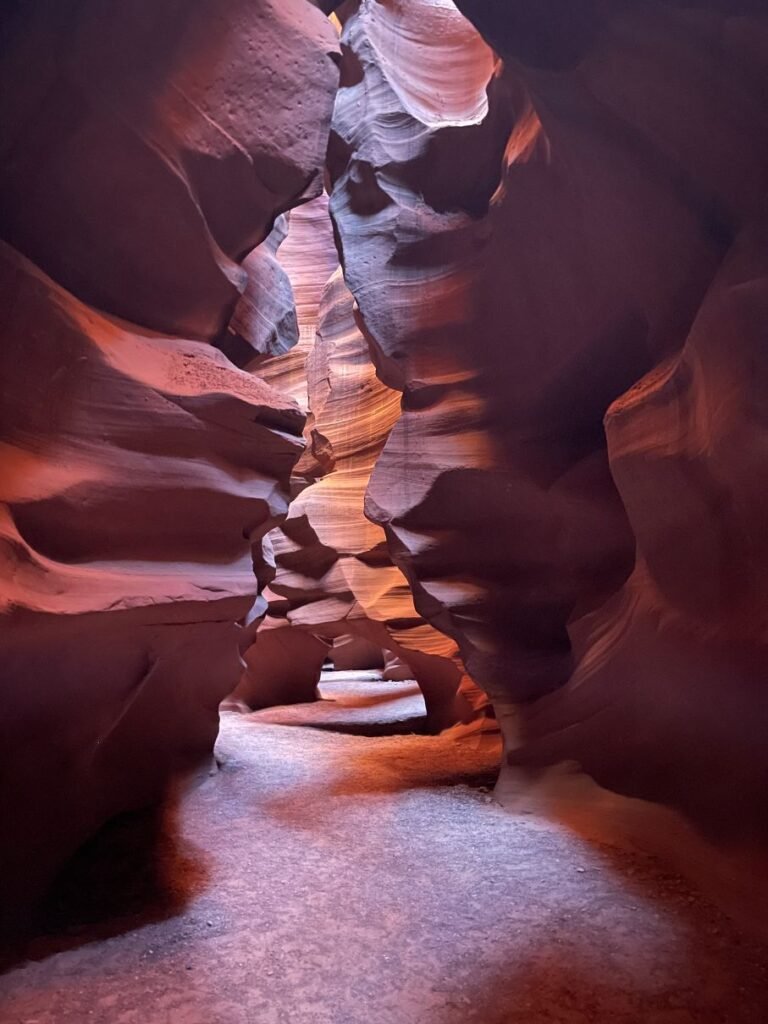
I was in the canyon in late October and although I didn’t get to experience this phenomenon, I still was dazzled by the dramatic colors and textures and couldn’t stop taking pictures of this surreal and unique environment. I couldn’t get over how the walls seemed to undulate as I walked through the labyrinth of corridors.
If you’re looking for an adventure with more rugged terrain, head to Lower Canyon. Due to its V-shape, you’ll have to squeeze through narrow passages, climb over rocks and go up and down several ladders. The experience is more of a hike with some fun obstacles and you might just feel like you’re in a scene from an Indiana Jones film. Additionally, the canyon is brighter and when the sun hits the walls, it creates its own special light effects on the wave-like sandstone forms.

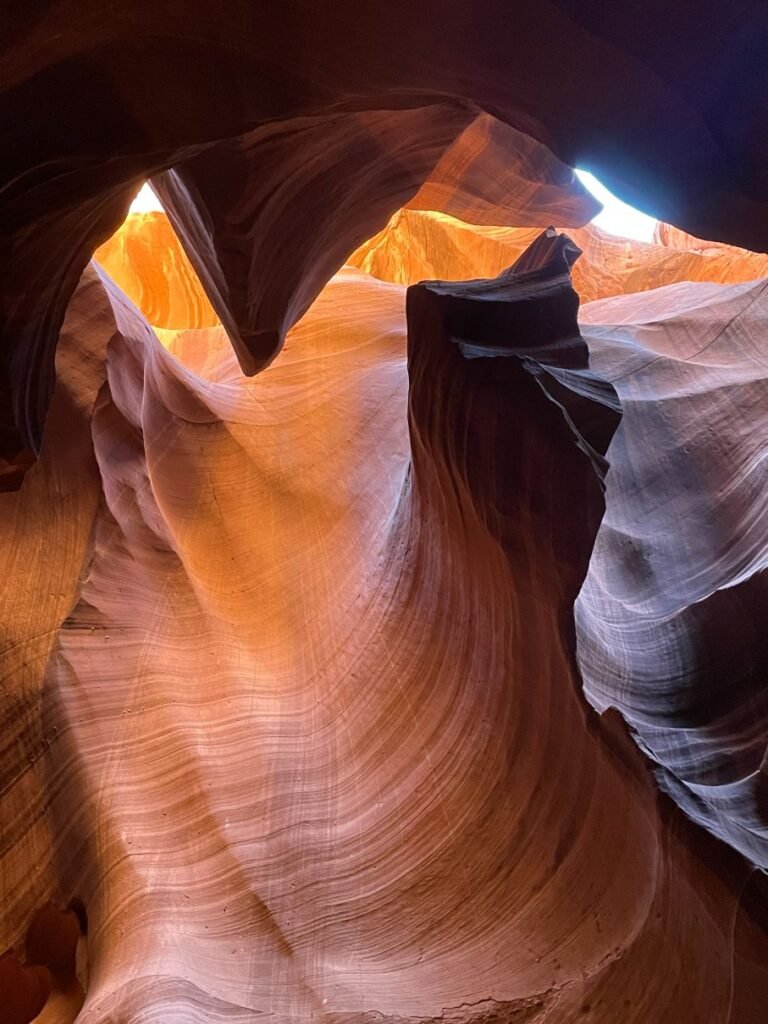
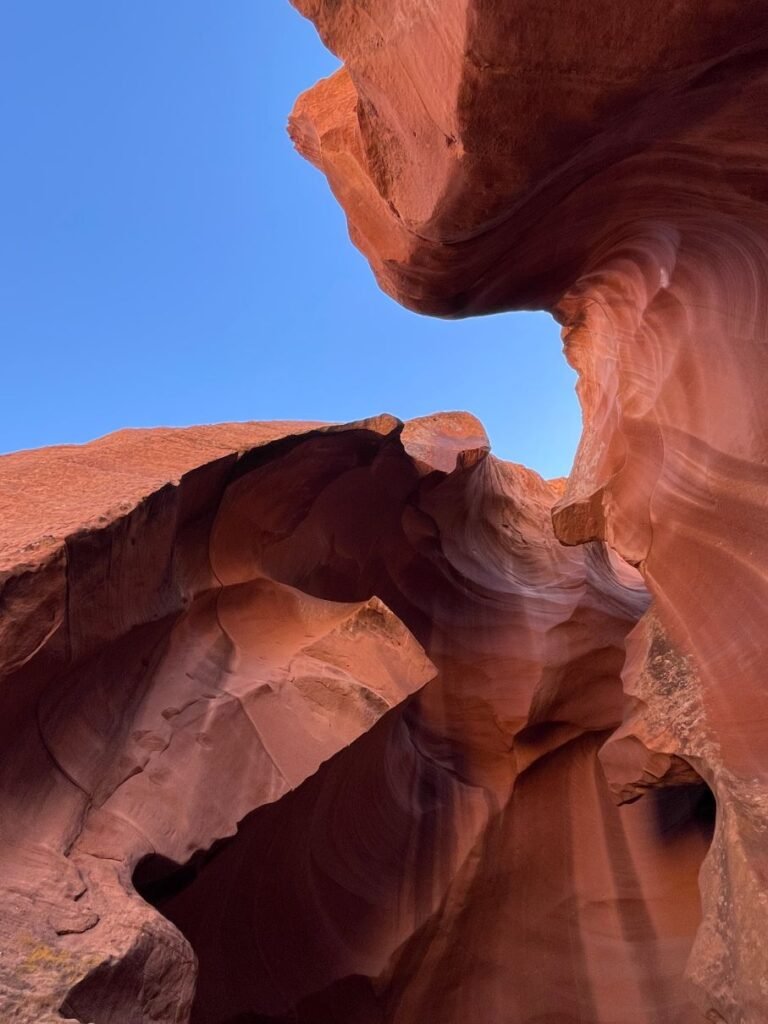
Tours last about 1.5 hours, same as those of Upper Canyon, but you’ll get to spend more time in the canyon itself since the tour starts only steps away from where you park your car at the company’s office. The pace is slower due to less people, so you’ll be able to take your time as you explore this otherworldly place. And to top it off, tours cost about half of those of Upper Canyon.
I’m glad I did both Upper and Lower, as they offer different experiences, but both guarantee you’ll see incredible rock formations in a kaleidoscope of colors.
If you go:
Reserve your tour in advance, especially if you’re doing Upper Canyon, as they get booked up quickly. There are several companies that do tours of Upper Canyon:
Adventurous Antelope Canyon Tours, Antelope Slot Canyon Tours, Antelope Canyon Tours and Antelope Canyon Navajo Tours
There are two companies that do tours of Lower Canyon:
Dixie’s Lower Antelope Canyon Tours and Ken’s Tours.
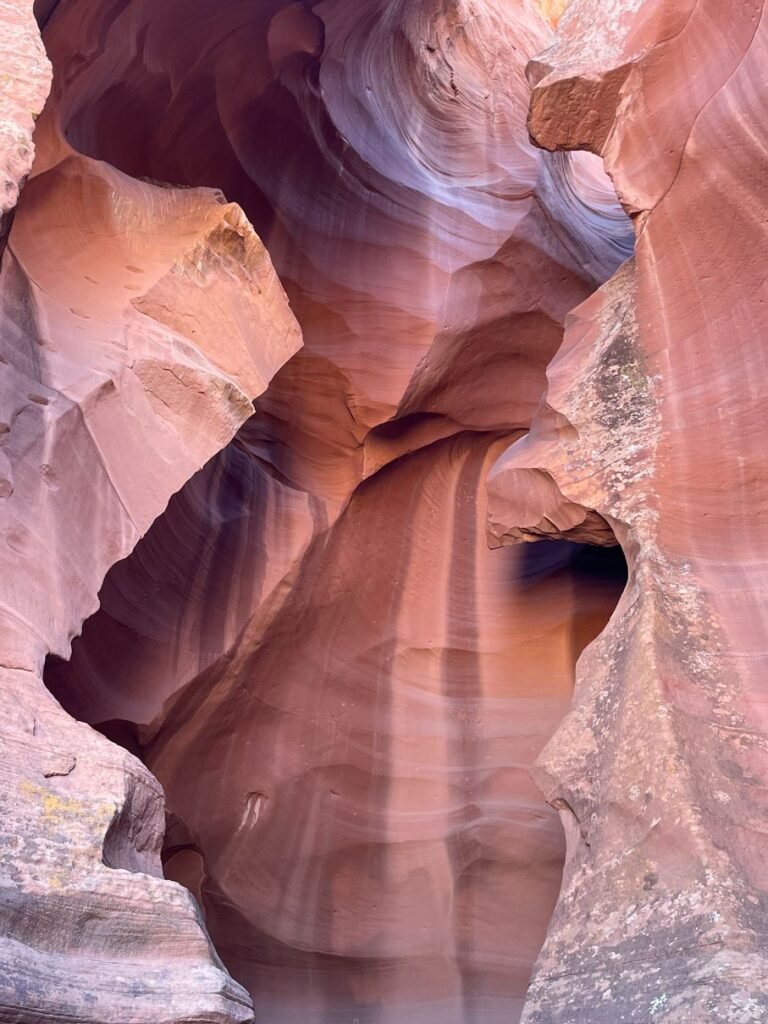
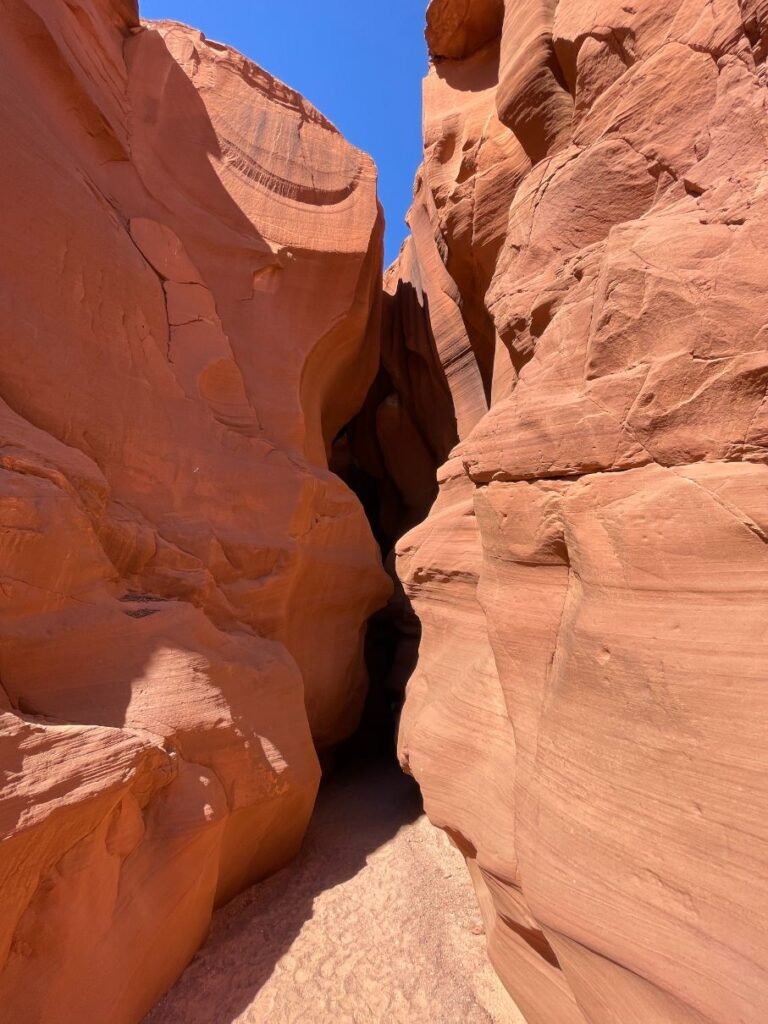
Upper Canyon exit




![Wickedly Good Halloween Cocktails [COCKTAIL TIME]](https://luxebeatmag.com/wp-content/uploads/2024/10/Diplomatico-Rum-Blood-Moon-Negroni-150x150.jpg)






